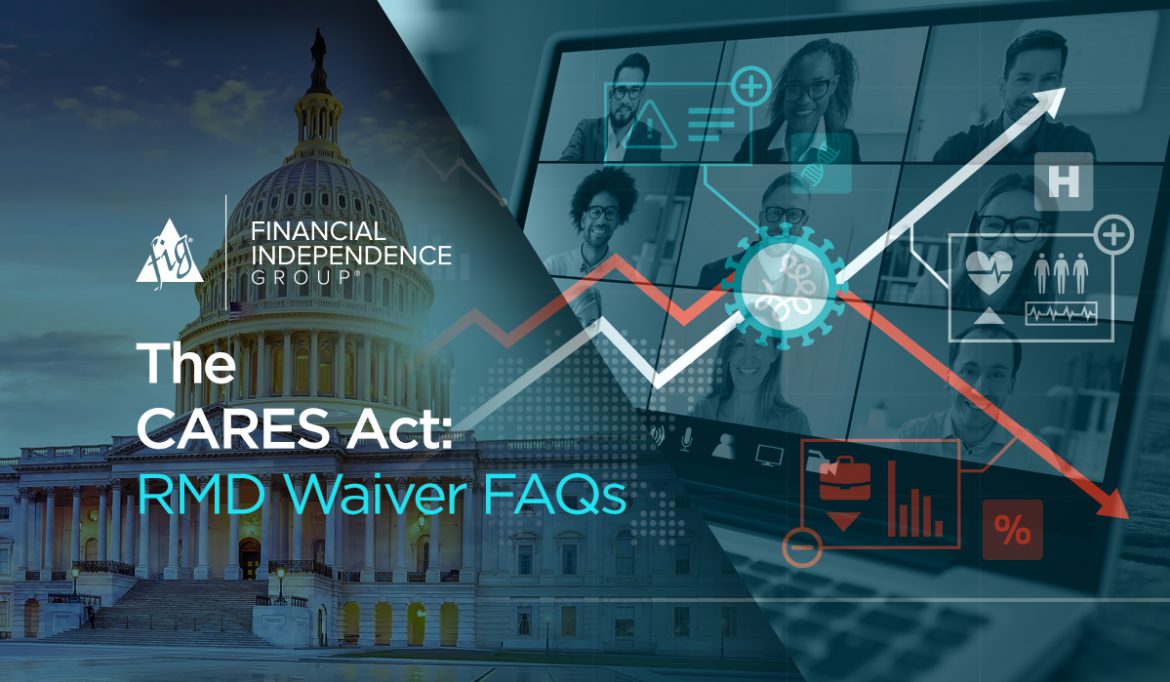Updated September 6, 2023, at 9:00 PM
On March 27, 2020, the Coronavirus Aid, Relief, and Economic Security Act (CARES Act) was signed into law. This $2.2 trillion stimulus package is one of the most significant bills ever passed through Congress. And with it comes certain provisions that affect rules for retirement plans and tax planning. Specifically, there’s an increased focus on the waiver of retirement minimum distributions (RMDs) for 2020.
Here are some frequently asked questions clients may have about the new CARES Act RMD waiver provision, along with some ways to potentially answer them.
Waiver of Required Minimum Distributions
For the calendar year 2020, the CARES Act has temporarily waived any RMDs from qualified retirement plans and individual retirement accounts (IRAs). Because most retirement plans have decreased in value recently, having your clients take a 2020 distribution would equate to them taking a larger percentage of their account’s value. Not to mention, they’ll be paying more in income tax and selling assets at lower valuations.
This move gives account owners new flexibility to retain tax-deferred savings until 2021 at the earliest.
The waiver applies to those under four separate circumstances:
- Any account owner who turned 70 1/2 in the year 2019.
- Any account owner who turned 70 1/2 in 2019 but didn’t withdrawal their RMD in that year.
- Anyone who planned to take a delayed RMD by April 1, 2020.
- All beneficiaries of inherited IRAs for heirs who died before 2020.
CARES Act RMD Waiver FAQs
What are the benefits?
With the current market volatility and financial loss from retirement accounts since December 2019, this RMD waiver is designed to help IRA accounts recover recent devaluations. Plus, clients won’t have to worry about withdrawing a higher percentage of their account’s balance. This flexibility should help down the road without forcing them to sell assets today at lower valuations. However, there are instances where it may make sense for clients to withdraw more or less of your their RMD money to take advantage of today’s low tax rates.
Are there downside risks?
There are not. The RMD suspension simply helps people have more control over their retirement assets.
It’s a little unclear. What’s the ruling on 2019 RMDs?
Because individuals have the option of taking their 2019 RMD either in 2019 or by April 1, 2020, there’s a couple of distinctions to make: If your client took their RMD in 2019, the new 2020 waiver doesn’t apply. However, if they took it after December 31, 2019, then the 2020 RMD waiver rule does apply.
I already claimed my distribution. Can I get my money back?
Yes and no. Strictly speaking, a distribution can’t be reversed. But, the CARES Act does allow 60 days for re-contribution back into your retirement account, assuming the RMD qualifies for a rollover into a new IRA. This provision allows clients to take advantage of the CARES Act relief while avoiding income tax on the RMD itself.
What if I took my RMD for 2020 more than 60 days ago?
While it’s no guarantee, if your clients did this, they may be able to re-contribute their distribution. Section 2202 of the CARES Act explains that if one can “demonstrate a coronavirus impact”, they may be eligible to re-contribute that RMD over the following three years. A “coronavirus impact” can count if they, their spouse, or someone in their household contracted the virus, or if they were negatively affected by the virus financially.
Can I re-contribute a 2020 RMD to an inherited IRA?
Probably not. This is because inherited IRAs aren’t usually eligible for rollovers, so without any more guidance from the IRS, your clients probably can’t re-contribute an inherited IRA’s RMD. However, it may be possible for beneficiaries affected by the virus to count the original RMD as coronavirus-related and then re-contribute that amount.
Does this rule apply to benefit plans like pensions?
No. If any of your clients have a defined benefit plan, they must continue taking distributions if they’re scheduled to.
What if I want my distribution?
Even with the RMD waiver, clients can still take their 2020 distribution to cover expenses. Please note that this distribution will be just that—a distribution. It would not count as an RMD.
Final Thought
Although the RMD waiver portion of the CARES Act will affect the most Americans, it’s likely your clients won’t have all the information they need to make informed decisions. Lucky for them, they have a trusted financial partner they can rely on.
To give your clients more information about the CARES Act, its RMD waivers, and other implications of the legislation, active FIG agents can head over to the FIG Agent Portal to download our client guide, The CARES Act: RMD Waivers & Other Facts to Know.


